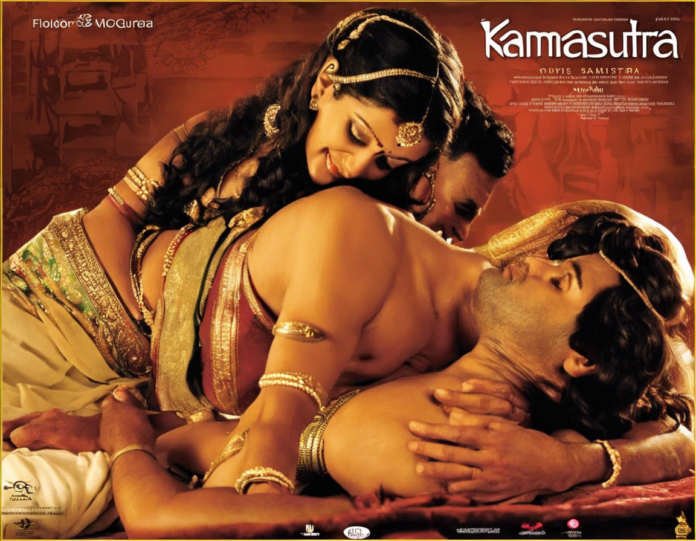The Kamasutra is an ancient Indian text that is renowned for its detailed insights into the art of love and sensuality. While the Kamasutra is primarily known for its explicit descriptions of sexual positions and techniques, its teachings go far beyond physical intimacy to encompass spirituality, relationships, and self-awareness. Over the centuries, the Kamasutra has been interpreted, adapted, and reimagined in various forms of art and media, including literature, sculpture, painting, and most recently, cinema. In this article, we will delve into the world of cinematic interpretations of the Kamasutra, exploring how this ancient text has inspired filmmakers around the globe to create visually stunning and thought-provoking works of art.
The Kamasutra in Cinema: A Brief History
The influence of the Kamasutra on cinema can be traced back to the early 20th century when filmmakers began to explore themes of love, desire, and sexuality on screen. One of the earliest cinematic adaptations of the Kamasutra can be found in the 1924 silent film "A Throw of Dice" directed by German filmmaker Franz Osten. This epic tale of love and betrayal draws heavily from the teachings of the Kamasutra, portraying its characters in intricate and sensual relationships.
In the 1970s, the Kamasutra experienced a resurgence in cinema with the release of films like "In the Realm of the Senses" directed by Nagisa Oshima. This Japanese-French erotic drama pushed the boundaries of on-screen sensuality, exploring themes of obsession, power, and eroticism in a bold and provocative manner.
Themes and Motifs in Cinematic Adaptations of the Kamasutra
1. Eroticism and Sensuality
One of the central themes explored in cinematic adaptations of the Kamasutra is eroticism and sensuality. Filmmakers often use the text as a source of inspiration to create visually stunning and sexually charged scenes that evoke the passion and intensity of the original teachings.
2. Power Dynamics
Another common motif in cinematic interpretations of the Kamasutra is the exploration of power dynamics in relationships. Characters often engage in intricate power play, using seduction, manipulation, and control to assert their dominance and fulfill their desires.
3. Spirituality and Connection
While the Kamasutra is primarily known for its sexual content, many filmmakers choose to explore the spiritual and emotional aspects of the text. Themes of connection, intimacy, and self-discovery are often woven into the narrative, emphasizing the deeper meanings behind the physical acts of love.
Notable Films Inspired by the Kamasutra
1. "Kama Sutra: A Tale of Love" (1996)
Directed by Mira Nair, this Indian-American film tells the story of two childhood friends who are trained in the art of Kamasutra but end up vying for the love of the same man. The film beautifully captures the lush landscapes of India and delves into the complexities of desire and jealousy.
2. "The Kamasutra Garden" (2017)
Directed by Riju R. Sam, this controversial film explores the lives of young women in a brothel who are trained in the ancient art of Kamasutra. The film tackles themes of empowerment, freedom, and sexual liberation in a bold and provocative manner.
3. "Maya" aka "Kamasutra" (1993)
Directed by Ketan Mehta, this Indian film is a retelling of the classic Kamasutra tale infused with elements of magic and mythology. The film weaves a mesmerizing narrative of love, betrayal, and redemption, set against the backdrop of ancient India.
The Kamasutra and Cultural Sensitivity in Cinema
While cinematic adaptations of the Kamasutra can be visually captivating and artistically compelling, it is important to approach these works with cultural sensitivity and respect for the source material. The Kamasutra is a sacred text in Indian culture, and its teachings hold profound significance for many people around the world. Filmmakers should strive to honor the spirit of the Kamasutra while also pushing the boundaries of storytelling and creativity.
Frequently Asked Questions (FAQs)
1. Is the Kamasutra just a manual of sexual positions?
While the Kamasutra does contain detailed descriptions of sexual positions, it is much more than just a manual of physical techniques. The text also explores themes of love, relationships, spirituality, and self-awareness.
2. Are cinematic adaptations of the Kamasutra suitable for all audiences?
Cinematic adaptations of the Kamasutra often contain explicit scenes of sensuality and nudity, making them unsuitable for younger audiences. It is important for viewers to approach these films with an open mind and a mature understanding of the subject matter.
3. Are there any modern interpretations of the Kamasutra in cinema?
Yes, there are several modern films that draw inspiration from the Kamasutra, exploring its themes in contemporary settings and contexts. These films often incorporate elements of romance, drama, and erotica to create engaging and thought-provoking narratives.
4. How has the Kamasutra influenced Western cinema?
The Kamasutra has had a profound impact on Western cinema, inspiring filmmakers to explore themes of love, desire, and sensuality in a variety of genres. From art house films to mainstream Hollywood productions, the influence of the Kamasutra can be seen in diverse cinematic works.
5. What should viewers keep in mind when watching cinematic adaptations of the Kamasutra?
Viewers should approach cinematic adaptations of the Kamasutra with an appreciation for the cultural and historical significance of the text. It is important to engage critically with these films, recognizing their artistic merits while also being mindful of their portrayal of sensitive themes.

